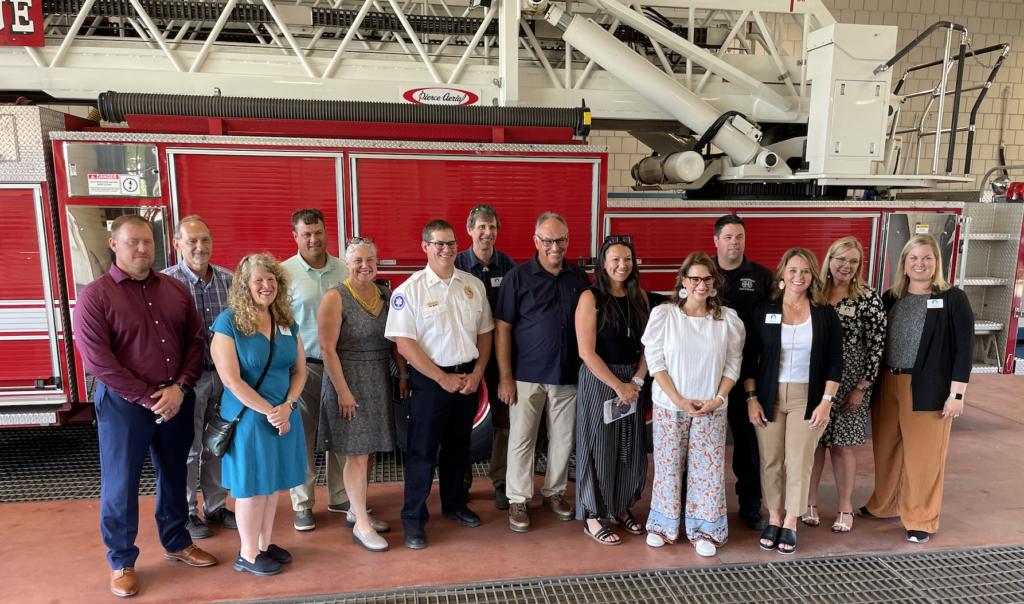
Minnesota Lt. Gov. Peggy Flanagan, front row with white top, is flanked by Moorhead government workers and area legislators on Thursday, June 29, at the First Avenue North fire station in Moorhead. (Photo/ Dan Haglund.)
Dan Haglund
Minnesota Lt. Gov. Peggy Flanagan met with Moorhead officials and area government representatives last week on her tour of broadband and infrastructure investments made during this year’s legislative session.
Flanagan visited an Internet provider and toured two infrastructure projects, including the 11th Street underpass and upgrades to MSUM’s Weld Hall.
And this week, Gov. Tim Walz and Flanagan announced new state and federal investments to expand broadband access across the state.
Minnesota secured nearly $652 million from the federal government and $67 million in state grants to build on the state’s broadband coverage efforts.
These announcements follow the $100 million in broadband infrastructure funding Walz signed into law this year.
The Minnesota Legislature allocated $65 million toward Moorhead’s Downtown Underpass/Rail Upgrade Separation in 2020. The city and the Minnesota Department of Transportation also received $26.3 million last year through a competitive grant program from the U.S. Department of Transportation to match state funds.
Normally, the project would have been fully funded, but is experiencing inflationary impacts. MnDOT and the city are collaborating to fill the gap.
The city and MnDOT have delayed and reallocated funding from other planned projects to partially close the gap.
Flanagan walked the length of the projected Moorhead underpass street with local officials including Moorhead Mayor Shelly Carlson, City Council member Deb White, city engineer Bob Zimmerman, state Rep. Heather Keeler, Dist. 4A and Sen. Rob Kupec, Dist. 4.
According to traffic studies on the underpass area, the total number of automobiles over railroad tracks crossings will be reduced by 35 percent, minimizing the risks of train-vehicle crashes and preventing life-threatening delays in emergency response times cause by train-blocked crossings.
Environmentally, the underpass will also reduce gas consumption in the area by more than 100,000 gallons per year in the autos waiting for about 90 trains per day to pass through.


